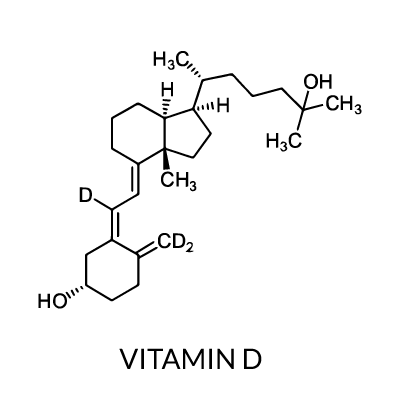Vitamin D is a fat-soluble vitamin that regulates calcium homeostasis and is vital for bone health. It can be obtained directly from the diet or from irradiation of the body. The two most prominent forms of vitamin D are ergocalciferol (vitamin D2) and cholecalciferol (vitamin D3).

Although Vitamin D is normally produced by ultraviolet (UV) light acting on 7-dehydrocholesterol in the skin, it can also be absorbed from feed. Season, geographic latitude, time of day, cloud clover, smog, and skin melanin content are among some of the factors that affect UVB radiation exposure and vitamin D synthesis. Complete cloud cover reduces UVB energy by 50%; shade reduces it by 60%. Vitamin D3 can be destroyed by exposure to ultraviolet (UV) light and by peroxidation in the presence of rancidifying polyunsaturated fatty acids (PUFA). Like vitamins A and E, unless vitamin D3 is stabilized, it is destroyed by oxidation, which is increased by heat, moisture and trace minerals. Vitamin D3 is absorbed from the intestinal tract in association with fats, as are all the fat-soluble vitamins. Like the others, it requires the presence of bile salts for absorption.
Clinical Signs of Vitamin D Deficiency
Without adequate amounts of vitamin D in a duck's diet, calcium doesn't get absorbed well, resulting in calcium deficiency. This can cause a drop in egg production or abnormal eggshells even if the bird is fed sufficient calcium in their diet. Growing ducklings with inadequate levels of vitamin D develop hypocalcemia or rickets, resulting in stunted growth. Vitamin D deficiency has also been linked to cardiovascular disease, skin conditions, cancer, and autoimmune disorders.
Nutritional Requirements of Vitamin D3 in Ducks
The dietary requirement for vitamin D3 in ducks is 200 IU/kg. Their need for vitamin D depends to a large extent on the ratio of calcium to phosphorus. The vitamin D needs of ducks are increased by inadequate levels of calcium and (or) phosphorus or by improper ratios of these minerals in the diet.
